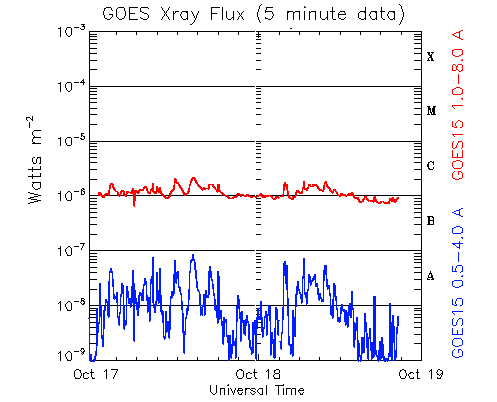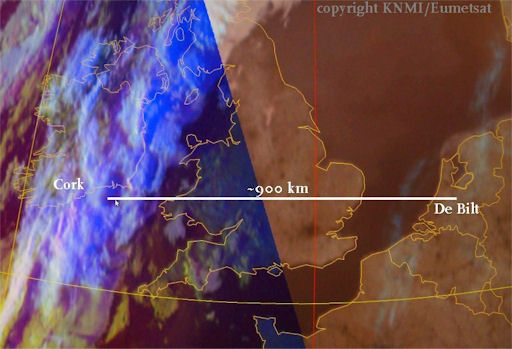Turn your cell phone into a field-tested satellite tracker. Works for Android and iPhone. | | | 600 MYSTERIES IN THE NIGHT SKY: The Fermi Gamma-ray Space Telescope recently produced a map of the night sky. Out of 1873 new sources, nearly 600 were complete mysteries. In today's story from Science@NASA, researchers speculate on the nature of the mystery objects--including the possibility that they are made of dark matter. [video] ROSAT DECAY UPDATE: The massive ROSAT X-ray space telescope continues to descend toward Earth. Latest estimates place the re-entry around noon Universal Time on Oct. 23rd. Uncertainties exceed 10 hours, which makes it impossible to say exactly where ROSAT will re-enter. Many sky watchers are seeing ROSAT in the night sky shining about as brightly as a 1st magnitude star. Check Spaceweather's Satellite Tracker for local flyby times. (There's an app for that, too.) QUIET SUN: How quiet can a star with eight sunspot groups be? Pretty quiet, it turns out. The sun has that many sunspots and more facing Earth, yet none of them are producing flares. Regard this plot of the sun's X-ray output for the past two days; it has almost flat-lined: 
Perhps it is the calm before the storm. Sunspot AR1319 has a 'beta-gamma' magnetic field that harbors energy for strong M-class flares. NOAA forecasters estimate a 30% chance of such an eruption in the next 24 hours. Solar Flare alerts: text, voice. DISTANT CLOUD SHADOWS: It's a common sight. Dark shadows (also known as "crepuscular rays") lance across the sky as the sun sets behind distant clouds. On Oct. 15 in the Netherlands, Jacob Kuiper could see the shadows, but he couldn't see the clouds that cast them; they were too far away. So he consulted a satellite: 
"In the satellite image, there were only few clouds that could be responsible for casting shadow bands into the glowing stratosphere above my home town, De Bilt," says Kuiper. "A frontal system was situated over eastern parts of Ireland, and some of the cloud tops there reached heights up to 8 kilometres. I believe these clouds 900 km away were responsible for the shadow bands I witnessed." That's going the distance to solve a mystery. Browse the links for more shadows: from John Stetson of Sebago Lake, Maine; from Manfred Birawsky of Kaiserslautern, Germany; from Marek Nikodem of Szubin, Poland; from Doug Zubenel of Cedar Creek near De Soto, Kansas. Potentially Hazardous Asteroids ( PHAs) are space rocks larger than approximately 100m that can come closer to Earth than 0.05 AU. None of the known PHAs is on a collision course with our planet, although astronomers are finding new ones all the time. On October 18, 2011 there were 1256 potentially hazardous asteroids. Notes: LD means "Lunar Distance." 1 LD = 384,401 km, the distance between Earth and the Moon. 1 LD also equals 0.00256 AU. MAG is the visual magnitude of the asteroid on the date of closest approach. | | The official U.S. government space weather bureau | | | The first place to look for information about sundogs, pillars, rainbows and related phenomena. | | | Researchers call it a "Hubble for the sun." SDO is the most advanced solar observatory ever. | | | 3D views of the sun from NASA's Solar and Terrestrial Relations Observatory | | | Realtime and archival images of the Sun from SOHO. | | | from the NOAA Space Environment Center | | | the underlying science of space weather | | | for out-of-this-world printing and graphics | | 
